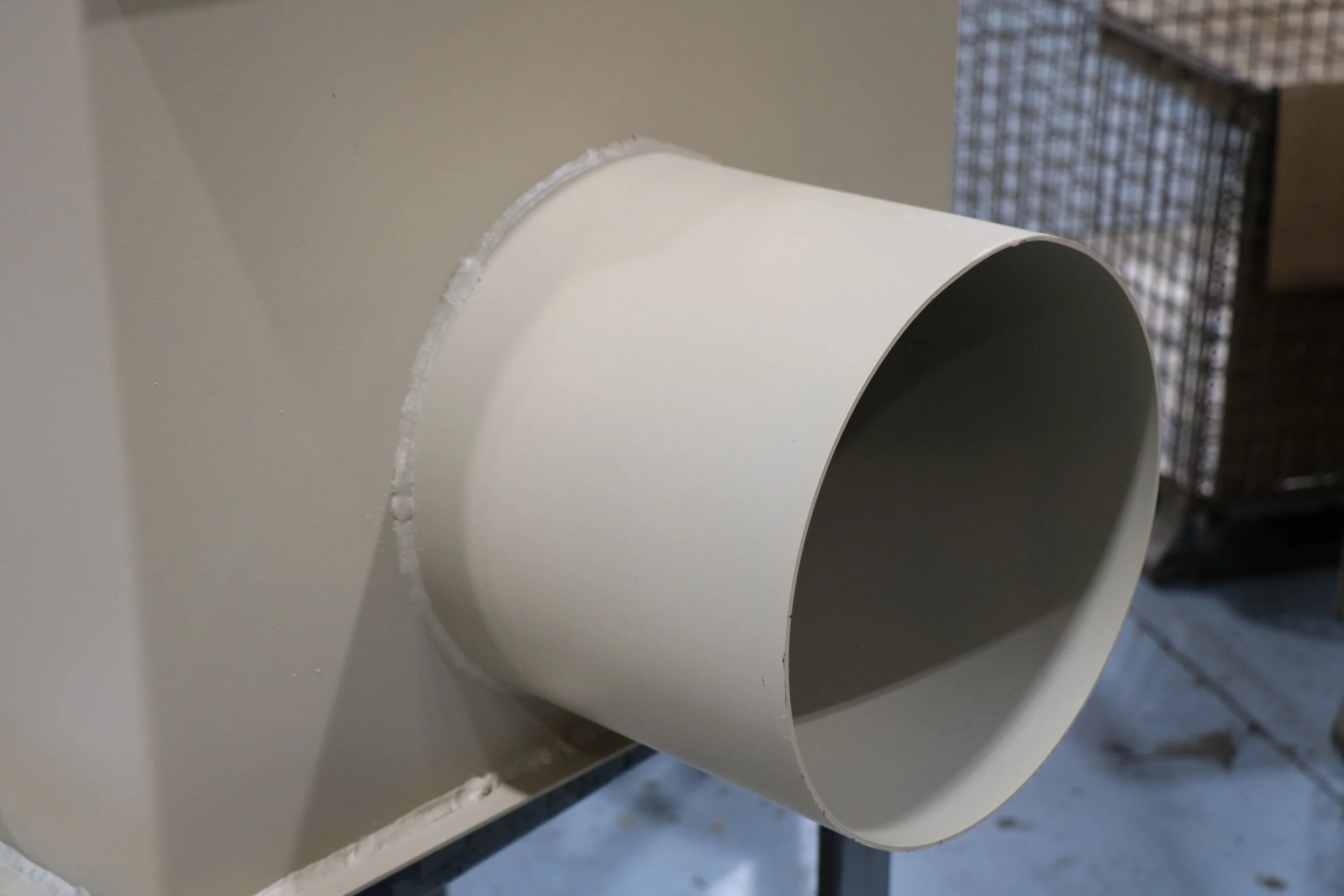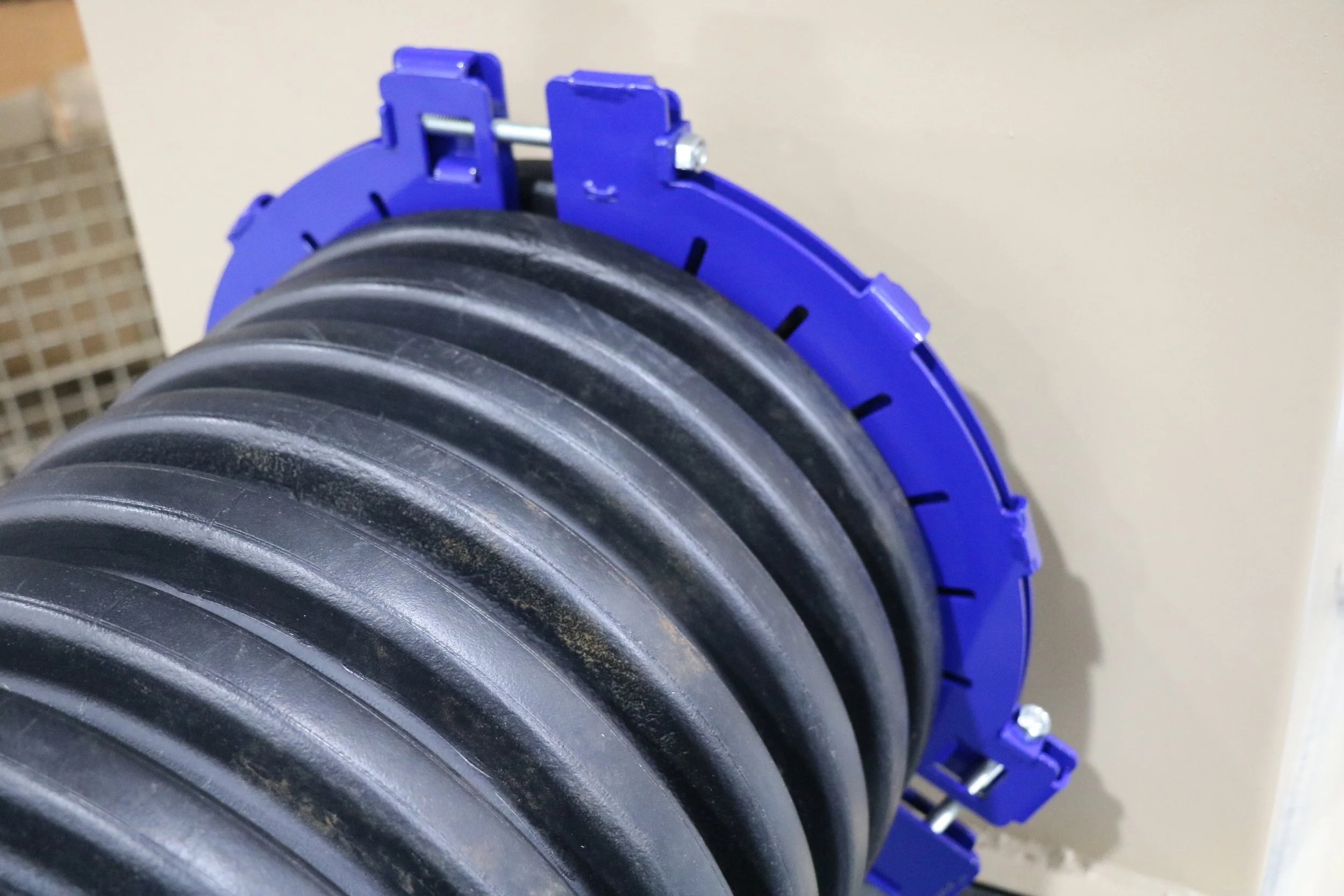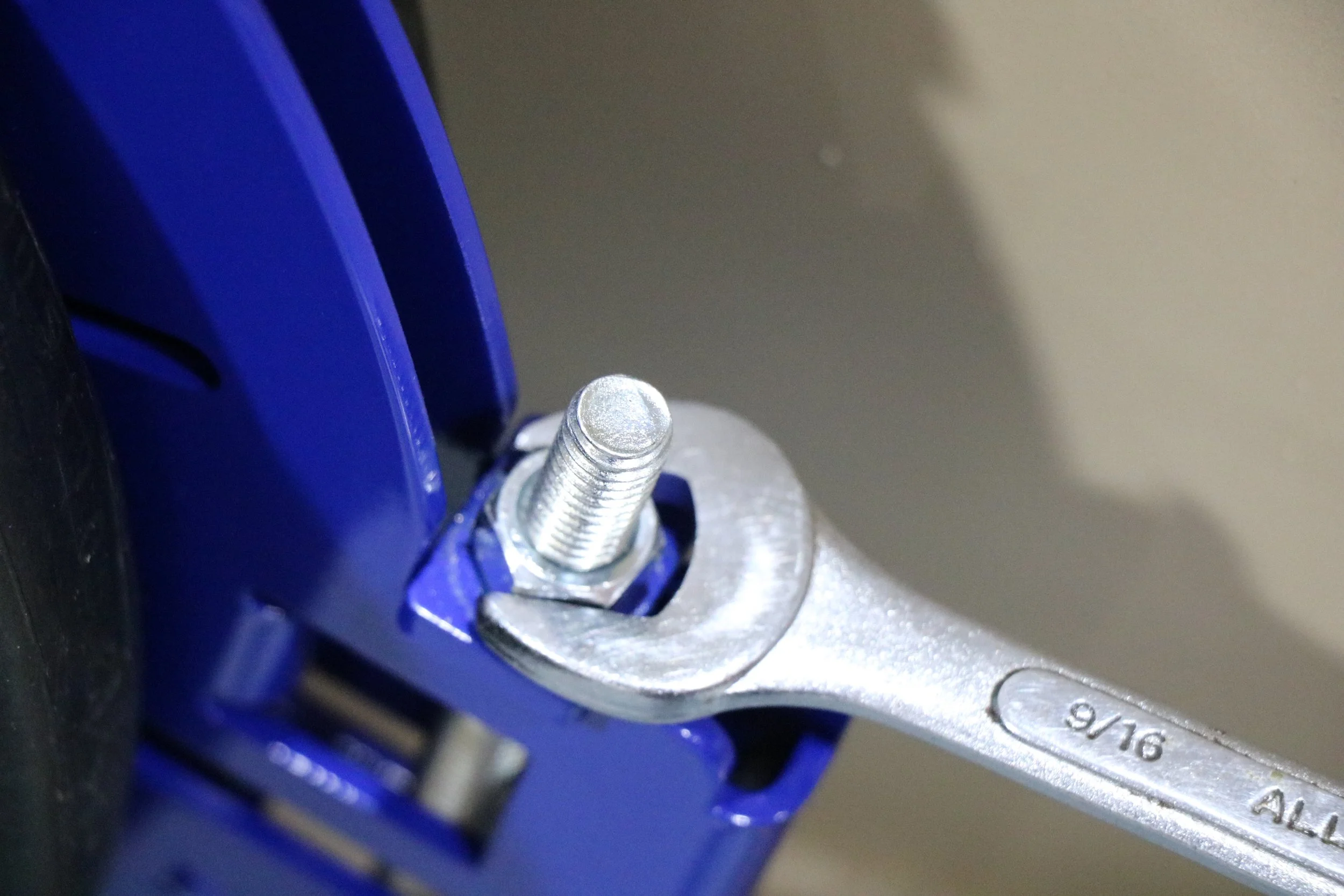Mounting Plastic Pipe of the Inlet of a Drainbox Inline Water Level Controller
Our larger units have metal nipples that directly mate with double-wall plastic drain pipe. A compression clamp is provided to press the pipe firmly against the metal, creating a water tight seal.
The clamps are sized specifically to fit the diameter of pipe the structure is built to accept. One clamp is supplied with each Inline Drainbox. Additional clamps are sold separately.
The inlet side of inline water level control structures is under pressure and must be sealed to prevent leakage.
Outlet of the box showing the nipple to accept the HDPE pipe.
12-inch compression clamp with hardware.
Arrange the clamp segments around the pipe.
The clamp will fit between the ribs. Place the hardware in the clamps so that you have easy access to all of the nuts. The hardware is not directional so place the screws so the nuts are facing up or out. This makes it much easier to tighten the clamp.
There is a washer with a square hole for the carriage bolts and a thicker washer with a round hole that goes behind the nut. These washers are elongated to fit within the grooves on the clamp. It is important to align the washers with the grooves and ensure they seat properly. These washers will keep the bolt from turning as you tighten the clamp.
Barely engage the nuts on each bolt. You will need all the excess length the bolts provide to stretch the clamp onto the pipe.
Clamp in the initial position.
Tighten The Clamp
Installation of the clamps for pipe up to 18-inches in diameter is straight forward and easily accomplished with a 9/16-inch wrench. A deep well 9/16-inch socket can speed the process if available. It is best to hand tighten the bolts and avoid using an impact wrench because most can easily exceed the torque rating of the bolts supplied. Compression clamps for larger pipes utilize larger hardware and an impact wrench is very useful.
Draw the bolts in EVENLY.
Add a few turns to each nut working back and forth between all of the bolts. This is important to ensure the clamp engages evenly.
You will feel the force increase on the wrench as the clamp begins to compress the plastic pipe. As the clamp is drawn closed, the force on the wrench will increase dramatically. This is the point where the clamp has compressed the plastic tightly against the metal nipple and is beginning to squeeze the plastic to create the seal.
Properly tightened clamp
Snug the nuts a few more turns to complete the seal.
The pipe should now be rigidly attached to the box.
DO NOT tighten the clamps until the gaps between the segments completely close — the bolts will be under extreme load and will eventually break. Beware of using an an impact wrench because it can apply far more torque than the bolts can withstand.
You should have about a 3/8-inch gap between each of the segments once the clamp is tight.
See the field installation of these clamps HERE
Sealing Large Diameter HDPE Pipe Connections
Leaking can be a problem on tall structures because of the increased head pressure applied to the seal. Water will seep from the inlet and percolate through the soil and around the box to the outlet drain. Eventually, this can undermine the structure.
Two compression clamps can used to improve the seal. Index or stagger the clamps by one-half of the tooth width to provide the most even sealing pressure.
An optional step involves applying an adhesive between the pipe and the inlet nipple. Few adhesives adhere well to HDPE. We recommend a liberal coating of Dupont (formally Dow) U-418, or U-428 urethane adhesive on the inlet sleeve prior to final installation of the pipe. These single-part adhesives cure into a tough but pliable urethane rubber. They both come in plain and “HV” versions (“HV” signifies “High Viscosity"). U-428 cures about twice as fast as U-418. For this application, any formulation will produce acceptable results. The glue does not truly bond to the HDPE pipe but it makes a great form-fitted gasket. Use caution because these adhesives are tenacious and are hazardous. They make a mess of everything they inadvertently touch. They do not wash off. Wear disposable gloves and protective clothing. Follow the manufacturer’s instructions and wear the appropriate PPE.
Two compression clamps showing the staggered configuration and examples of the single part urethane adhesive.








